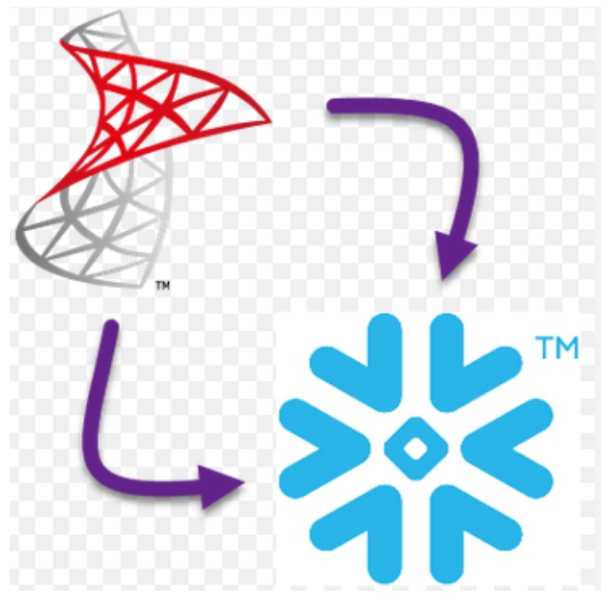As the volume and complexity of data continue to increase, businesses must find ways to store and analyze that data efficiently. SQL Server has long been a go-to database management system for many businesses, but with the rise of cloud-based solutions, companies are starting to explore alternatives like Snowflake. In this article, we’ll explore the pros and cons of migrating from SQL Server to Snowflake.
What is SQL Server?
SQL Server is a relational database management system (RDBMS) developed by Microsoft. It has been around for over 30 years and is widely used by businesses of all sizes to store and manage their data. SQL Server is known for its scalability, security, and robust features, including data warehousing, business intelligence, and advanced analytics.
What is Snowflake?
Snowflake is a cloud-based data warehousing and analytics platform. It was founded in 2012 and has quickly gained popularity due to its ability to handle large volumes of data and perform complex analytics. Snowflake is known for its simplicity, scalability, and elasticity, allowing businesses to store and analyze data quickly and easily.
Pros of Migrating from SQL Server to Snowflake
Scalability: Snowflake can handle large volumes of data with ease, and can scale up or down as needed. This makes it an ideal choice for businesses that need to process and analyze large amounts of data on a regular basis.
Cost: Snowflake’s pricing model is based on usage, which means businesses only pay for the resources they use. This makes it a more cost-effective solution than SQL Server, which requires businesses to purchase licenses and hardware.
Performance: Snowflake’s cloud-based architecture is designed to handle complex queries and analytics with ease. This means businesses can perform advanced analytics faster and more efficiently than with SQL Server.
Security: Snowflake is built with security in mind, and includes advanced features like multi-factor authentication, encryption, and role-based access control. This makes it a more secure solution than SQL Server, which may require additional security measures to be implemented.
Cons of Migrating from SQL Server to Snowflake
Learning Curve: Snowflake has a different architecture and user interface than SQL Server, which means there may be a learning curve for businesses migrating to the platform. This may require additional training for employees and could result in a temporary decrease in productivity.
Compatibility: Snowflake may not be compatible with all of the tools and applications businesses are currently using with SQL Server. This could require additional development work to ensure everything works seamlessly.
Dependence on Cloud Infrastructure: Snowflake is a cloud-based solution, which means businesses are dependent on the infrastructure provided by their cloud provider. This could result in unexpected downtime or performance issues if the cloud provider experiences issues.
Vendor Lock-In: Moving to Snowflake requires businesses to move their data to the cloud, which could make it difficult to switch to a different platform in the future. This creates a vendor lock-in situation that may not be ideal for all businesses.
Integration: Snowflake may not integrate seamlessly with all existing systems and platforms, which could lead to additional development work or the need for third-party solutions. This may be a disadvantage for businesses that have heavily customized their SQL Server environment or have complex integrations with other systems.
Data Privacy: Storing data in the cloud raises concerns around data privacy and compliance. Businesses must ensure that their data is protected in accordance with regulations like GDPR and HIPAA. While Snowflake has built-in security features, businesses must still take responsibility for ensuring that their data is protected and compliant.
Performance Issues: While Snowflake’s cloud-based architecture is designed to handle complex queries and analytics, there may be performance issues if the platform is not properly optimized. This could lead to slower query response times and decreased productivity for businesses.
Cost of Cloud Services: While Snowflake’s usage-based pricing model can be cost-effective, businesses must also consider the cost of the cloud services required to run the platform. This includes compute, storage, and network resources, which can add up quickly depending on usage.
Maintenance and Support: While Snowflake is a cloud-based solution that eliminates the need for hardware maintenance, businesses must still ensure that the platform is properly configured and optimized. This requires expertise and may require additional support from Snowflake or third-party consultants.
Conclusion
Migrating from SQL Server to Snowflake can offer many benefits for businesses, including scalability, cost savings, and improved performance. However, it’s important to carefully consider the potential drawbacks, including a learning curve, compatibility issues, dependence on cloud infrastructure, and vendor lock-in. Ultimately, the decision to migrate to Snowflake should be based on a thorough evaluation of the business’s needs, goals, and existing infrastructure, as well as a clear understanding of the costs and benefits of the platform.



